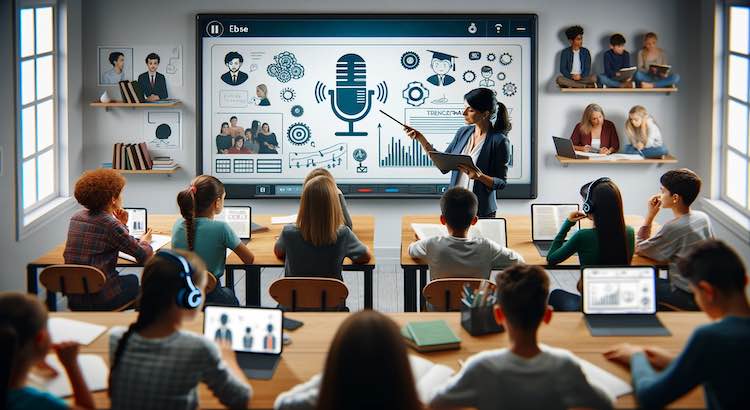Integrating Audio Transcription in the Classroom: A Practical Guide for Teachers
Education is changing quickly, and technology plays a big part. One tool making a big impact is audio transcription services. When teachers use transcription in their classrooms, they help make learning easier, more accessible, and more engaging for every student.
The Benefits of Audio Transcription in Education
The process of turning spoken words into written text is known as audio transcription. In schools and universities, this technology supports more students, especially those who need extra help. Transcripts give everyone access to clear, written records of lectures, discussions, videos, and group work.
- About 15% of adults in the U.S. have some hearing trouble (CDC, 2020).
- Transcripts make lessons easier to review and understand.
- They help students who learn in different ways—including those who do best with visual text.
Supporting Accessibility and Inclusion
Transcription services help all students by making sure no one gets left behind. Students with hearing loss, learning disabilities, or limited English skills benefit from having a transcript of lesson audio or video files.
- Written records help students understand lessons at their own pace.
- Transcripts support non-native speakers as they process information more slowly.
- Reviewing transcripts helps with assignments and studying for tests.
Encouraging Active Learning
When students do not need to write every word spoken in class, they can pay attention and participate more. Transcripts allow students to:
- Focus on ideas instead of note-taking.
- Look up key terms using search functions.
- Highlight or annotate important points for later review.
How Teachers Can Use Transcription in the Classroom
1. Choose the Best Transcription Service
- Look for accurate and reliable transcription services.
- For fast turnaround, try automated transcription.
- Check that the service handles multiple accents and technical words, and keeps student privacy safe.
2. Incorporate Transcripts Into Your Teaching Materials
- Use transcripts to build handouts with key points and discussion questions.
- Create quizzes or review guides based on lecture transcripts.
- Share written summaries with students before class to prep for discussion.
3. Encourage Collaboration and Active Review
- Give students access to transcripts in group projects.
- Ask students to pull out main ideas and highlight critical insights together.
- Let students work in pairs or small groups using transcripts to check understanding.
4. Make Transcripts Part of Assessments
- Craft essay questions and multiple-choice quizzes from class transcripts.
- Use transcripts for listening comprehension activities.
- Assign group discussions with references to specific transcript sections.
5. Gather Feedback and Improve
- Ask students to share how transcripts help them learn.
- Adapt your approach based on what works best in your classroom.
- Try different tools, such as subtitling services for videos or closed caption services for lectures.
Additional Ways to Use Transcription for Teachers
- Translate transcripts with text translation services for students who speak other languages.
- Use audio translation for international classroom collaboration.
- Proofread transcripts with transcription proofreading services to ensure quality and accuracy.
The Future of Transcription in Learning Environments
Real-time transcription is already in use in some advanced classrooms. With modern AI transcription subscriptions, teachers can access instant transcripts right after a lesson. As technology grows, expect even more seamless integration with learning management systems.
- Teachers will help students build digital literacy skills.
- Access to data makes lessons more personalized and flexible.
Getting Started With Transcription in Your School
You do not need a big budget to get started. Transcription pricing and captioning services pricing can be very affordable. Many schools order services on demand with links to order transcription or order captions as needed.
Conclusion: Simplify Classroom Learning With GoTranscript
Transcription technology makes it easier to support every student. From accessibility to active learning, teachers have many ways to use transcripts to improve their lessons. As classrooms evolve, integrating transcription is essential for modern education.
If you want to bring these benefits to your classroom, GoTranscript offers full solutions, including transcription, closed captions, subtitles, translation, and more.



















 Verified Order
Verified Order